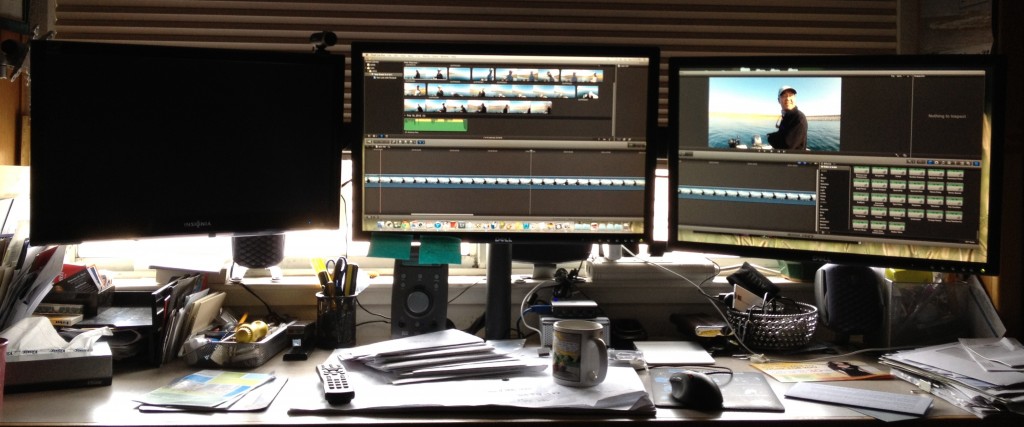

As with the previous example, the colour and lighting appear slightly unnatural and – for publication purposes – it would probably benefit from experimentation with the tone mapping parameters to achieve a more natural result. The tone compression method (using only default values) shown as Image A in Figure 3 shows some improvement in this respect, with both the side of the cutting and the surface of the chalk floor exhibiting textural detail, but the detail enhancement method (shown as Image B, also using default values) is a considerable improvement, with good textural detail visible in all areas of the photograph. Although an exposure slightly above the camera meter’s recommendation would provide an acceptable result, either the areas of shadow or the stark white of the chalk floor surface would be difficult to render effectively without considerable post-processing of the image. The photograph shows part of a rammed-chalk floor, partly excavated, adjacent to a dark red/brow n clay. Figure 3 illustrates one of the higher contrast scenes, although not the most extreme. In around 12 of the 68 cases, however, the contrast was sufficiently high in the scene that some mitigation would have been required in the field to ensure an acceptable photograph. recommended exposure settings of the camera proved not to be suitable, and a published image would have been selected from one of the other nearby exposures. Histograms are shown to illustrate the general distribution of values, and are not necessarily to the same scale for each image. Tone mapping and exposure fusion images were generated in Photomatix Pro 3.0 so ftware using ‘default’ settings. HDR radiance map was constructed using estimated relative EV values of +5, +4, 0 and -2 respectively for images 1 through 4.

Scanning was done with a Nikon 4000ED film scanner.

Image B was generated directly from the four scans without the need to construct an HDR radiance map using exposure fusion. Image A (bottom left) was generated from that using the detail enhancement method. Specific exposures were not recorded for these slides, so some experimentation with different estimates of their relative exposures was used to generate a suitable HDR radiance map. These are from excavations at the Cove, Avebury in 2003 but are fairly typical of ‘legacy’ photographic material that exists in many archaeological archives. The four images (numbered 1 to 4) were scanned from a sequence of bracketed Fujichrome colour slides.


 0 kommentar(er)
0 kommentar(er)
